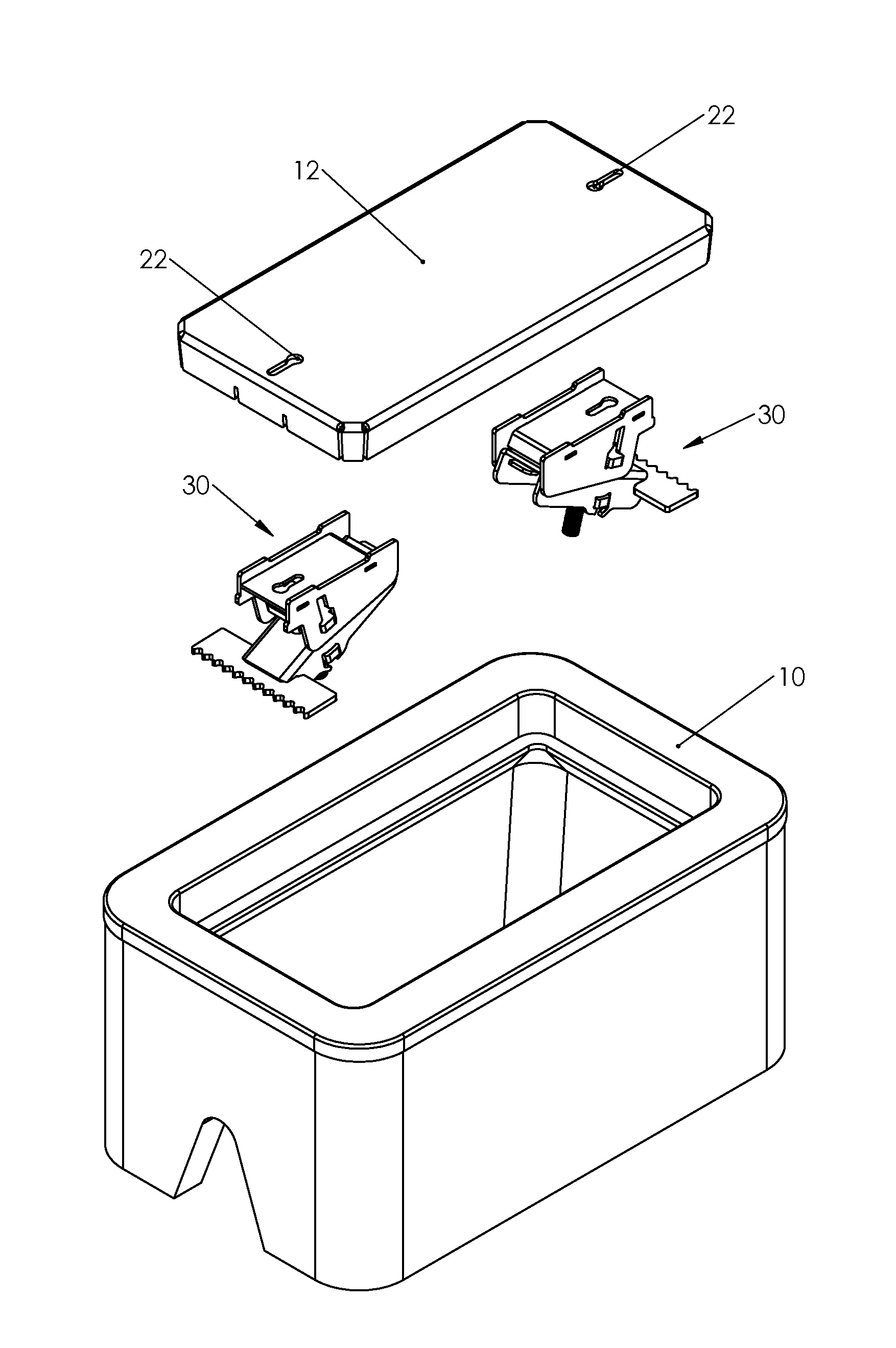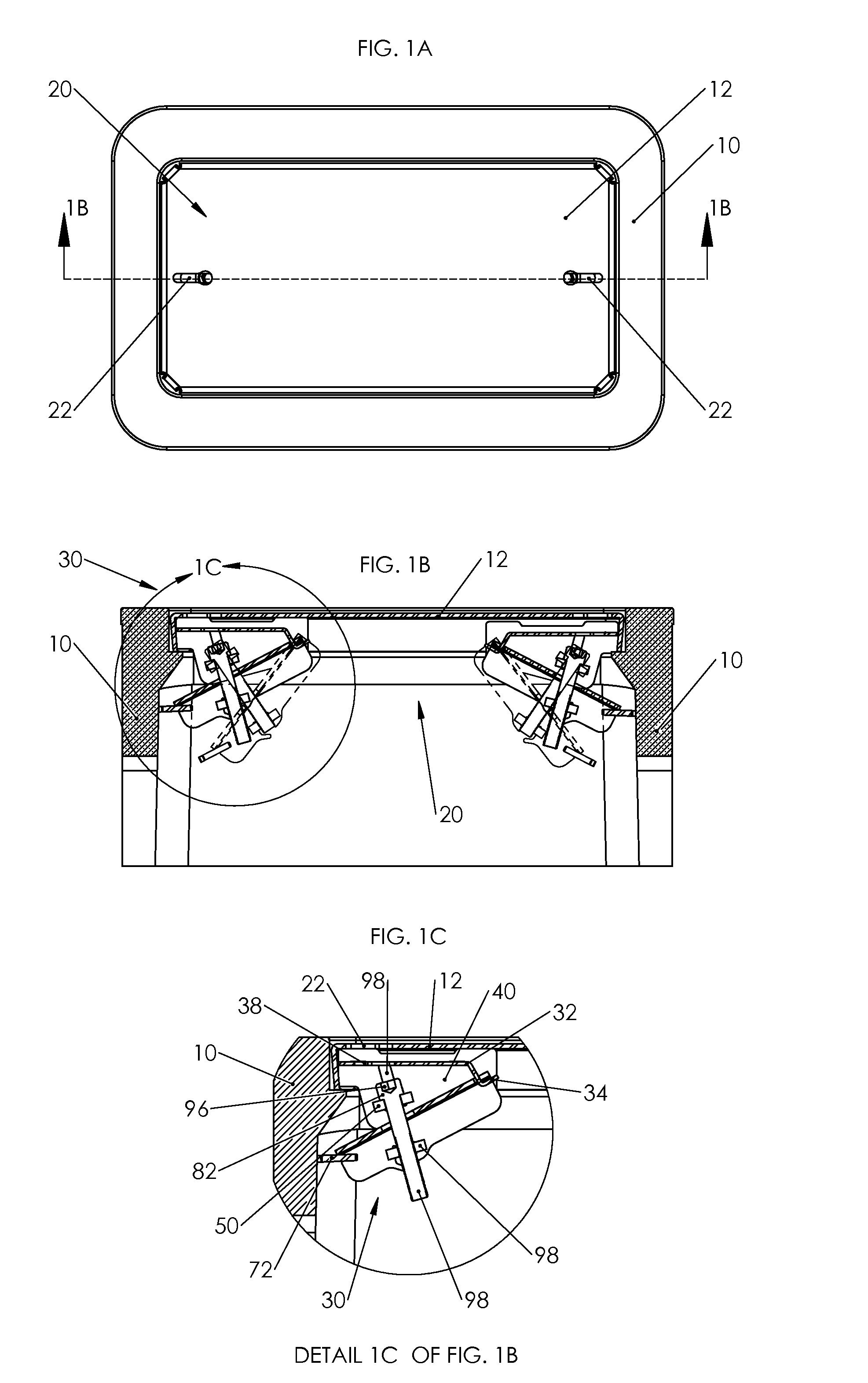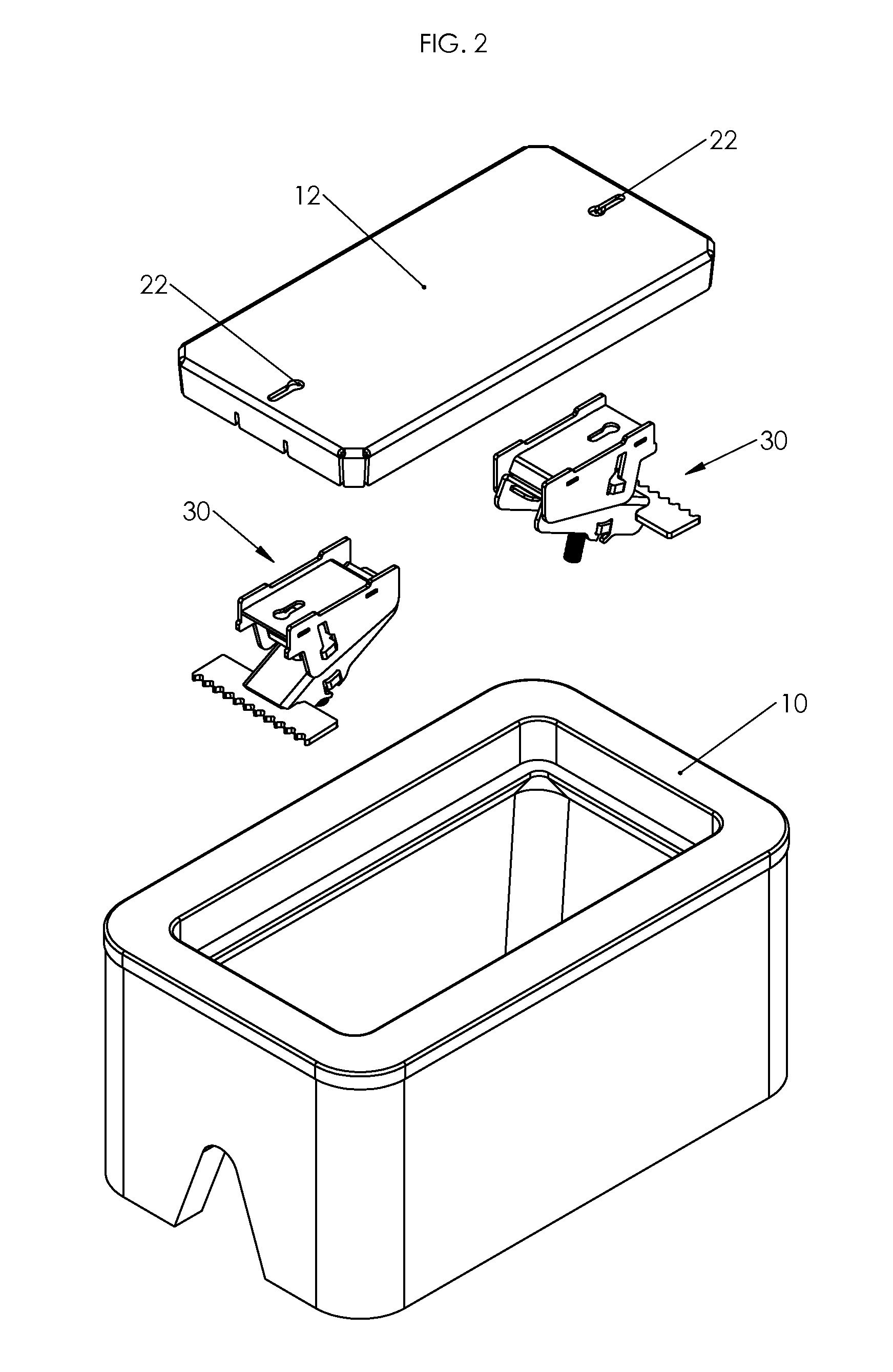Lockable utility box lid
a utility box lid and lockable technology, applied in the field of utility box lids, can solve the problems of limited design, limited ability of conventional utility box lids to be securely attached to enclosure boxes, limited ability of other methods of securing utility box lids to enclosure boxes, etc., to prevent, restrict and/or deter unauthorized access.
- Summary
- Abstract
- Description
- Claims
- Application Information
AI Technical Summary
Benefits of technology
Problems solved by technology
Method used
Image
Examples
first embodiment -
First Embodiment-Operation-FIGS. 8E thru 8F
[0070]The sequential illustrations of FIGS. 8A thru 8F depict of a method of inserting the handled tool 92 into the clamping mechanism 30 as follows: The tool head 96 is first inserted downwardly through the first circular end of the upper keyhole-shaped tool aperture 22 of the box lid 12 followed by a second lateral movement of the handled tool 92 towards the second linear end of the upper keyhole-shaped tool aperture 22. With this second movement, the reduced tool shank 98 allows for the movement of the handled tool 92 into the second linear end of the upper keyhole-shaped tool aperture 22 while the tool head 96 passes beneath the same second end of the upper keyhole-shaped tool aperture 22 of the box lid 12. The third movement is again a downward so that the tool head 96 passes through the second circular end of the lower keyhole-shaped tool aperture 38 of the lock plate 32. The fourth movement is again a lateral movement (opposite the s...
PUM
 Login to View More
Login to View More Abstract
Description
Claims
Application Information
 Login to View More
Login to View More - R&D
- Intellectual Property
- Life Sciences
- Materials
- Tech Scout
- Unparalleled Data Quality
- Higher Quality Content
- 60% Fewer Hallucinations
Browse by: Latest US Patents, China's latest patents, Technical Efficacy Thesaurus, Application Domain, Technology Topic, Popular Technical Reports.
© 2025 PatSnap. All rights reserved.Legal|Privacy policy|Modern Slavery Act Transparency Statement|Sitemap|About US| Contact US: help@patsnap.com



